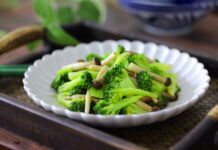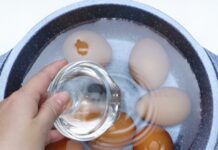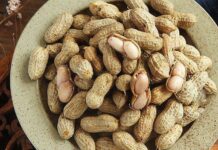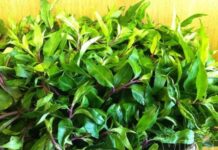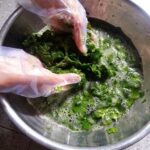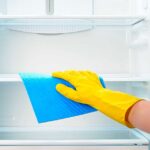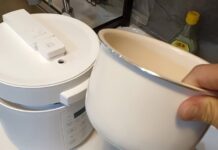
Wet shoes are prone to developing an unpleasant odor, creating an ideal environment for bacterial growth.
So, how can you rescue your shoes immediately, ensuring they dry quickly, retain their shape, and remain odor-free? Let’s explore these five super-effective steps to safeguard your shoes from the adverse effects of rainy, humid weather.
5 Steps to Salvage Your Shoes in Humid Weather
Step 1: Dry Them Immediately
When your shoes get wet, your first priority is to remove any standing water from their surface. Avoid letting the water soak into the fabric or leather for too long, as this can cause the shoes to lose their shape, deteriorate faster, and create a breeding ground for mold and bacteria.
– For canvas or athletic shoes: Use a dry cloth or paper towel to blot the exterior and interior of the shoes. Gently press the cloth into the wet areas to absorb the moisture instead of rubbing vigorously, as that may damage the fabric.
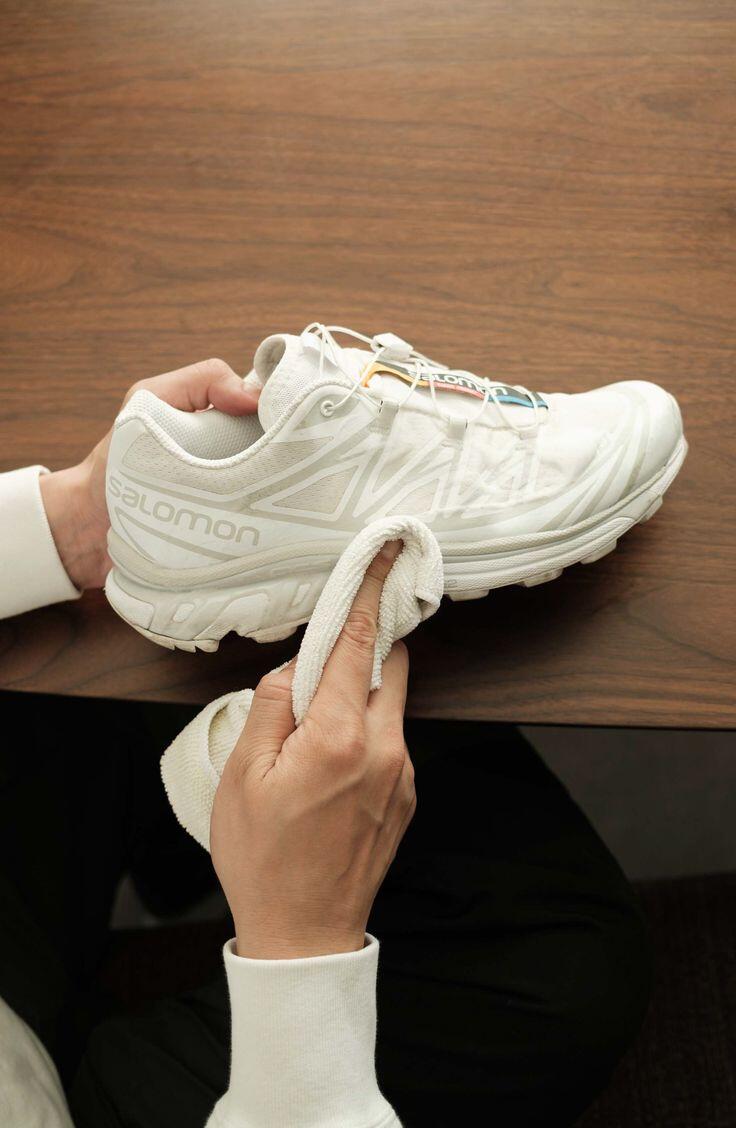
The first step is to dry the shoes by blotting them with a cloth or paper towel.
– For leather or suede shoes: These materials are sensitive to water. Avoid using a wet cloth, and opt for a soft, dry cloth to wipe the surface gently. If the shoes are dirty, use a soft-bristled brush instead of rubbing them with a cloth.
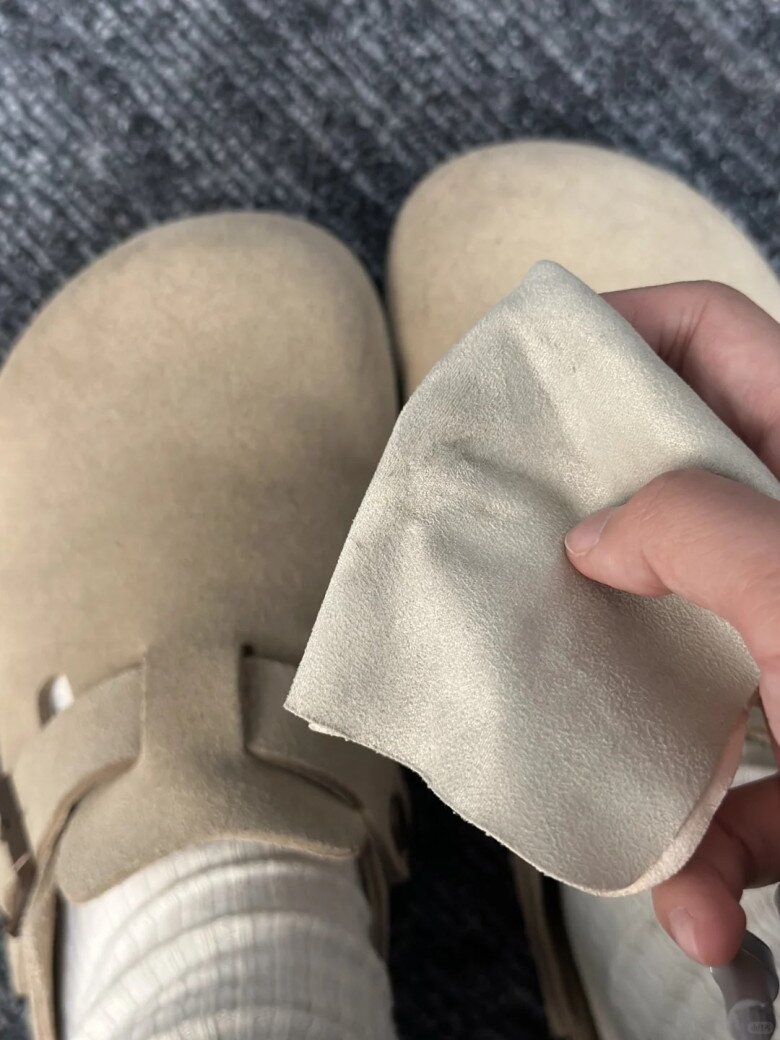
It is recommended to use a cloth instead of toilet paper to dry the shoes.
Avoid using thin toilet paper, as it may tear and stick to your shoes, making the cleaning process more challenging. Additionally, do not use facial tissue, as it tends to disintegrate when wet, leaving paper residue on your shoes.
Step 2: Stuff the Shoes with Newspaper or Paper Towels
After drying the surface, address the moisture inside the shoes. If left unattended, the water will soak into the insoles and soles, prolonging the drying process and potentially causing an unpleasant odor.
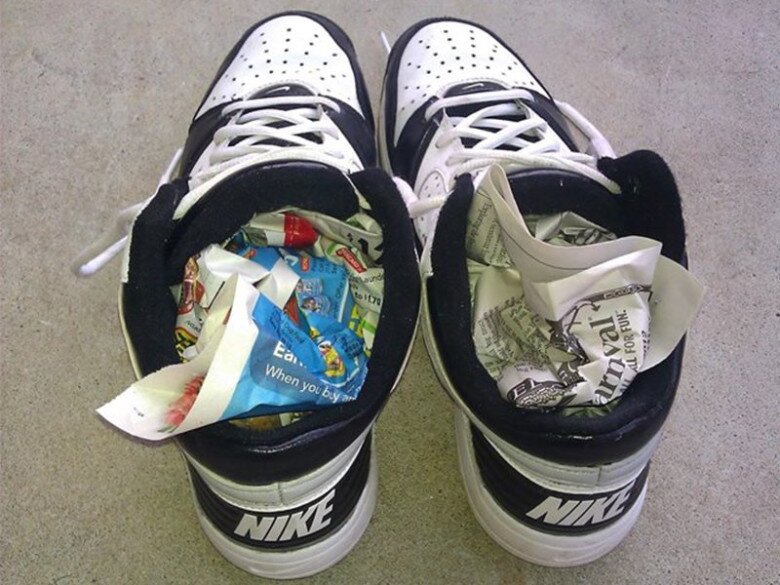
Use crumpled newspaper or paper towels to absorb moisture from the inside of the shoes.
Crumple up newspaper or use thick paper towels and stuff them into the shoes. These materials will help draw out moisture from the insoles and soles. Avoid packing the shoes too tightly, as you need to allow some space for air circulation, facilitating faster drying. If your shoes are thoroughly soaked, replace the paper every 1-2 hours for optimal moisture absorption.
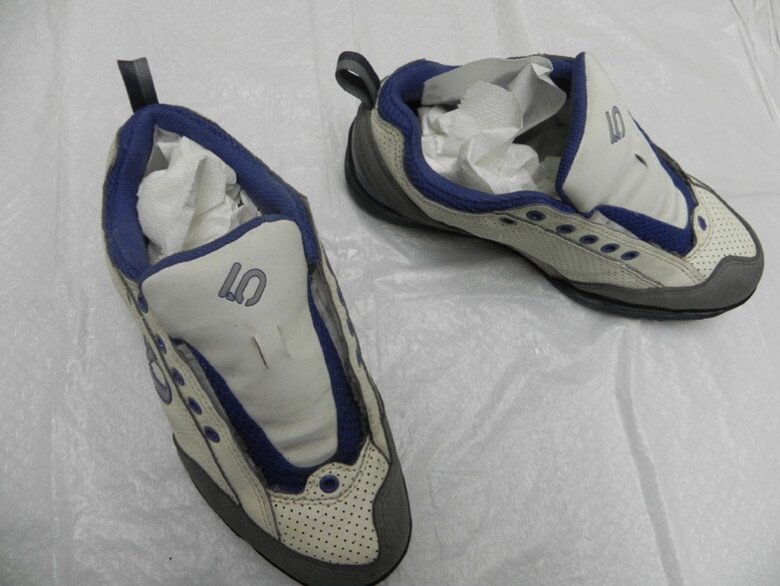
Alternatively, you can use dry cloth towels instead of paper if you don’t have newspaper.
Step 3: Utilize Household Items to Expedite the Drying Process
In addition to newspaper and paper towels, you can employ various household items to accelerate the drying process while maintaining the original shape of your shoes:
– Silica gel packets: If you have small silica gel packets from shoe boxes or food packaging, place them inside your shoes to absorb moisture more effectively.
– Cat litter: Cat litter is an excellent moisture absorber. Simply pour it into a small fabric bag, place it inside your shoes, and let it work its magic overnight. By morning, your shoes will be significantly drier.
– Dedicated shoe dryer: If you own a shoe dryer, now is the time to use it. This is the most efficient and safest way to dry your shoes without damaging the material.
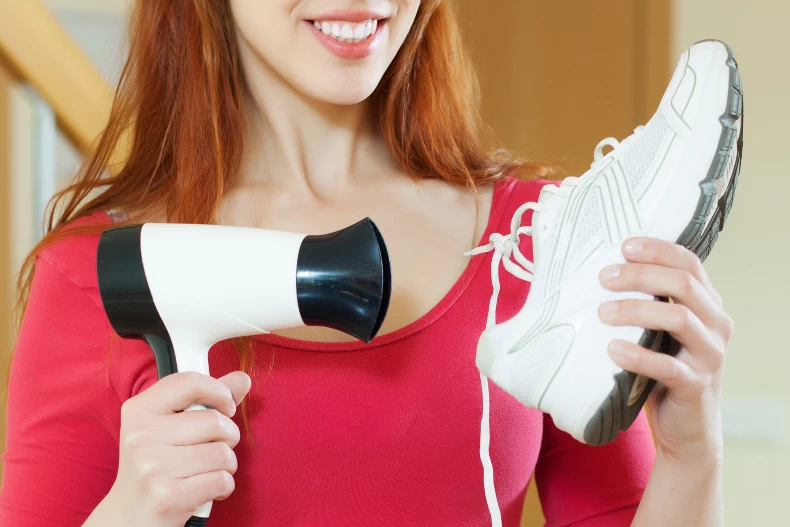
However, avoid placing your shoes too close to direct heat sources, such as heaters or strong flames, as they can melt the glue and cause the shoes to shrink. Using a hairdryer on high heat is also not recommended, as the concentrated hot air can distort your shoes.
Step 4: Air-dry Your Shoes Properly
Once your shoes are no longer damp, it’s crucial to air-dry them correctly to ensure they dry completely without deformation:
– Use a fan or hairdryer on the cold setting to speed up the drying process.
– Place your shoes in a well-ventilated area, avoiding direct sunlight, as intense sunlight can harden leather shoes and fade canvas shoes.
– Air-dry your shoes by standing them upright or using shoe hangers to promote better air circulation.
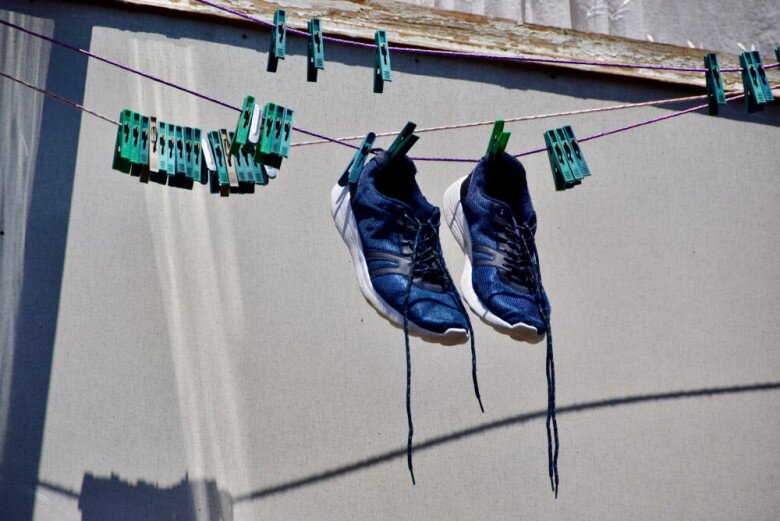
If your shoes have removable insoles, take them out and air-dry them separately to speed up the drying process and prevent odors.
Step 5: Deodorize and Prevent Mold
Once your shoes are dry, the final step is to eliminate any lingering odors and prevent mold growth:
– Baking soda: Sprinkle a small amount of baking soda into your shoes, let it sit overnight, and then shake it out. Baking soda absorbs moisture, neutralizes odors, and inhibits bacterial growth.
– Tea bags: Place a used tea bag inside each shoe to naturally absorb odors and leave a pleasant aroma.
– Shoe deodorizer: Spray a shoe deodorizer to eradicate bacteria and maintain fresh-smelling shoes.
Proactive Shoe Protection
Instead of waiting until your shoes get wet to take action, you can proactively protect them from the outset to mitigate the effects of rainy, humid weather. Before heading out, apply a water-repellent spray to shield your shoes from moisture, especially for leather and athletic shoes.

If you own canvas shoes, you can rub the surface with a white candle and then gently heat it with a hairdryer to create a natural water-repellent coating. Additionally, on rainy days, the best way to protect your shoes is to use shoe covers or waterproof boots, ensuring your favorite pair stays dry and clean even when navigating through puddles.
The Magic of Old Oil Bottles: 5 Surprising Ways to Reuse Them.
Introducing the humble bottle of essential oil – a powerhouse of benefits that extends far beyond its initial use. Even when it seems empty, this humble bottle still has a few tricks up its sleeve. A must-have for every household, the uses of this oil are endless, and you might be surprised at its versatility.
Soak Fish in This Magic Water: Eliminate Fishy Odor and Enhance Meat Sweetness by Twofold
A quick rinse with plain water won’t do the trick when it comes to eliminating the fishy odor and maintaining the taste of your catch. However, by soaking your fish in this special solution for just a minute, you can effectively neutralize any unpleasant odors. This simple step ensures your fish not only smells fresh but also tastes sweeter.
The Ultimate Guide to Offal: Transforming Lungs with a Magic Leaf Blend for a Crispy, Tangy Treat
Pork offal, with its unique texture and taste, can be transformed into a mouth-watering delicacy with a simple trick – a handful of magic leaves. These leaves are the secret weapon to eliminating any unpleasant odors, resulting in a crisp and tantalizing treat that will have your taste buds dancing.











